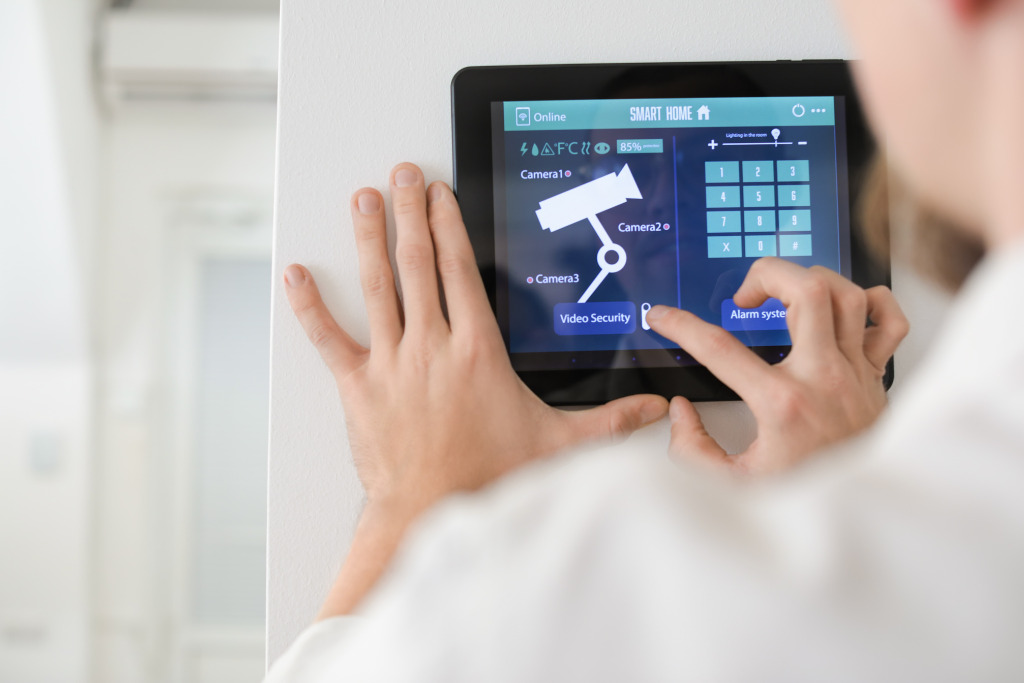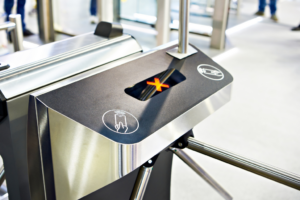Integrating Alarm Systems with Access Control: The Ultimate Guide

Integrating access control systems (eac) with alarm systems is a pivotal step in fortifying security measures for residential and commercial properties. This blog post delves into the seamless convergence of these two essential components, the access system and alarm system, to create a robust security infrastructure.
By understanding the benefits, challenges, and best practices associated with this integration of unified systems, businesses, and homeowners can make informed decisions to enhance their overall security framework.
The Basics of Access Control Systems
Managing Entry
Access control systems, including access control and control panels, are designed to manage entry to a property or specific areas within a building. These systems play a crucial role in enhancing security by regulating the individuals who are allowed access.
Access control systems utilize various credentials such as keycards, biometrics, or PIN codes for access. For instance, employees may use their keycards and access systems to gain entry into restricted areas of an office building. This helps prevent unauthorized personnel from entering sensitive zones.
Enhanced Security
By integrating alarm systems with access control systems, property owners can further enhance security measures. When an unauthorized entry is attempted or detected, the integrated system triggers an alarm alerting security personnel about the breach.
This integration ensures that not only is access restricted through physical means like keycards but also alerts are generated when unauthorized attempts occur. For example, if someone tries to force open a secured door without proper authorization, the integrated system would immediately sound an alarm and notify relevant authorities.
The Benefits of Security System Integration
Streamlined Management
Integrating alarm systems with access control systems streamlines management by allowing centralized monitoring and control. This means that security personnel can oversee all aspects of the security system from a single interface, making it easier to respond promptly to any security threats or incidents. For example, if an unauthorized individual attempts to gain access to a restricted area, the integrated system can immediately trigger an alarm while simultaneously denying entry.
This integration also enables visual confirmation of events, providing security personnel with real-time footage or images when specific events occur. This not only helps in verifying alarms but also aids in understanding the nature of the event and taking appropriate action.
Enhanced Security
By integrating these systems, businesses benefit from enhanced overall security. Notifications are sent out in real-time when there is an attempted breach or other critical events. This allows for immediate action to be taken, minimizing potential damage and ensuring a swift response to any security concerns.
Integrating alarm systems with access control systems provides a comprehensive approach to addressing security needs. It ensures that all components work together seamlessly rather than operating as separate entities. This comprehensive approach creates a more robust and effective security infrastructure for businesses.
Integrating Fire Alarms with Access Control Systems
Automatic Evacuation
Integrating alarm systems with access control systems ensures a coordinated response in emergencies. For instance, when a fire alarm is triggered, the integration can automatically unlock doors for safe evacuation. This feature significantly enhances the safety of occupants in facilities.
The seamless connection between fire alarms and access control systems allows for real-time communication. In the event of a fire emergency, this integration enables immediate actions to be taken based on the information received from the fire alarm system. For example, if smoke or heat detectors are activated, integrated access control systems can automatically release electromagnetic locks to facilitate swift egress.
Enhanced Safety Measures
This integration provides an added layer of security by ensuring that authorized personnel have quick and unobstructed access to restricted areas during emergencies. It also prevents unauthorized individuals from entering secure zones during evacuation procedures.
- Swift evacuation: Integrated systems allow for rapid unlocking of doors.
- Real-time communication: Immediate action based on fire alarm data.
- Added security measures: Authorized personnel’s unobstructed access during emergencies.
The Role of Biometric Technologies in Access Control Integration
Enhanced Security
Integrating alarm systems with access control systems using biometric technology provides an enhanced level of security. Biometrics, such as fingerprint or iris scanning, offer a high-security authentication method through unique biological traits. This integration enhances the accuracy and reliability of biometric data, ensuring that only authorized individuals are granted access to specific areas within a building.
Biometrics eliminates the need for physical credentials like keycards or PIN codes. This not only enhances convenience but also significantly improves security by reducing the risk of unauthorized access due to lost or stolen credentials. For example, if an employee leaves their keycard unattended, it could be used by someone else to gain unauthorized entry into secure areas. However, with biometric integration, this risk is mitigated as each person’s unique biological trait serves as their credential.
Seamless Access Control
The integration of alarm and access control systems with biometric technology results in a seamless access control process. Once integrated, employees can simply use their biometric information to gain entry without needing to remember or carry additional items like keycards or fobs. This streamlined approach not only saves time but also reduces the administrative burden associated with managing physical credentials.
Moreover, integrating these technologies ensures that sensitive areas are protected round-the-clock while allowing authorized personnel easy and quick access when needed—making it easier for companies to maintain both safety and efficiency across their premises.
Essential Factors in Choosing an Integration System
Compatibility with Existing Security Infrastructure
When integrating alarm systems with access control systems, it’s crucial to consider compatibility with the current security infrastructure. The integration system should seamlessly work with the existing components such as surveillance cameras, biometric readers, and intrusion detection devices. For example, if a company already has a robust CCTV system in place, the chosen integration system should easily incorporate this element without any conflicts or limitations.
Moreover, ensuring that the new integrated system can communicate effectively with legacy security equipment is essential for maintaining operational efficiency. This compatibility also helps in leveraging previous investments by maximizing their utility within the new integrated setup.
Scalability for Future Expansion
Scalability plays a pivotal role when choosing an integration system for alarm and access control. As businesses grow and technology advances, having an integrative solution that can scale according to these changes is imperative. For instance, a small business might start with basic access control features but may later require more advanced functionalities as it expands. The chosen integration system should have the flexibility to accommodate these future needs without requiring a complete overhaul of the existing setup.
Furthermore, technological advancements may introduce new security measures or devices that would need to be seamlessly incorporated into the existing integrated system. Therefore, scalability ensures that businesses remain adaptable to emerging security trends without disrupting their operations.
User-Friendly Interfaces and Seamless Interoperability
When selecting an integration system for alarm systems and access control, prioritizing user-friendly interfaces is vital for smooth operation and management. An intuitive interface simplifies training requirements for staff members while reducing errors in usage. Seamless interoperability among various integrated systems streamlines processes such as monitoring alarms alongside access logs on a single dashboard.
The ability of different components within the integrated setup to communicate effortlessly enhances overall security management capabilities while minimizing complexities associated with operating multiple standalone solutions.
By considering factors like compatibility, scalability, user-friendly interfaces, and seamless interoperability when choosing an integration system, businesses can ensure efficient consolidation of their alarm systems and access control mechanisms.
How to Integrate Intrusion Alarms with Access Control and EAC Integration for Businesses
Strengthening Security
Integrating intrusion alarms with access control systems is crucial for fortifying business security measures. This integration allows businesses to take immediate action upon unauthorized access attempts, ensuring a rapid response to potential security threats. By combining these two systems, businesses create a more robust and comprehensive approach to safeguarding their premises against unauthorized entry.
Businesses benefit from the seamless coordination between intrusion alarms and access control systems. For instance, if an individual attempts unauthorized access by tampering with a door or window, the integrated system can immediately trigger an alarm while simultaneously denying entry through the access control system. This swift response not only deters intruders but also provides real-time alerts to designated personnel or authorities.
The integration of these two systems offers enhanced protection by creating multiple layers of defense against unauthorized access. In addition to preventing physical breaches, it also ensures that any attempted breach triggers an instant response, minimizing the risk of security breaches going unnoticed or unaddressed.
Streamlining Operations
Moreover, integrating intrusion alarms with access control simplifies operational processes for businesses. Instead of managing separate systems for each aspect of security—such as monitoring employee access and detecting intrusions—businesses can consolidate their efforts into one cohesive platform. This consolidation streamlines management tasks and reduces the complexity associated with overseeing multiple independent security solutions.
Achieving Comprehensive Security through System Integration
Integrating alarm systems with access control systems creates a comprehensive security solution that combines multiple layers of protection. By unifying these two critical components, businesses can minimize vulnerabilities and enhance their overall defense against various security threats. For instance, when an unauthorized individual attempts to gain entry into a restricted area, the integrated system can trigger both the alarm and deny access simultaneously.
This approach not only fortifies the physical security of a premise but also extends to digital spaces by integrating smart building management software and devices. The unified system offers enhanced situational awareness, allowing organizations to respond rapidly to potential security breaches or incidents within their premises. This proactive response is crucial for mitigating risks and ensuring the safety of employees, assets, and sensitive information.
Final Remarks
The integration of alarm systems with access control systems offers a comprehensive approach to security, combining various technologies to create a robust protective environment. By understanding the basics of access control systems and the benefits of security system integration, businesses can make informed decisions about implementing these solutions. The role of biometric technologies and essential factors in choosing an integration system further emphasizes the importance of a well-thought-out approach to security.
Achieving comprehensive security through system integration is not only about mitigating risks but also about creating a seamless and efficient operational environment. Businesses are encouraged to explore the possibilities of integrating fire alarms, intrusion alarms, and access control systems to ensure a holistic security strategy that addresses multiple threats. With the right integration, businesses can enhance their overall safety measures while streamlining their security management processes.
Frequently Asked Questions
What are the key components of an access control system?
An access control system typically consists of electronic locks, card readers or biometric scanners, a central control panel, and management software. These components work together to regulate and monitor entry to a building or specific areas within it.
How does integrating fire alarms with access control systems and EAC integration enhance overall security?
Integrating fire alarms with access control systems allows for coordinated responses in emergencies. When a fire alarm is triggered, integrated systems can automatically unlock doors for safe evacuation and provide real-time information to first responders.
What role do biometric technologies play in the integration of access control systems in organizations?
Biometric technologies such as fingerprint or iris recognition provide advanced security measures by accurately identifying individuals. Integration of these technologies into access control systems enhances authentication precision and reduces the risk of unauthorized entry.
Why is choosing a security system based on essential factors crucial for organizations?
Selecting an integration system tailored to specific business needs ensures seamless functionality and optimal security performance. Factors such as scalability, compatibility with existing infrastructure, and ease of maintenance are critical for long-term effectiveness.
How can medium organizations integrate intrusion alarms with their access control systems effectively?
Integrating intrusion alarms with access control enables centralized monitoring and swift response to unauthorized entries. By linking these systems, businesses can strengthen perimeter security while streamlining management through a unified platform.





